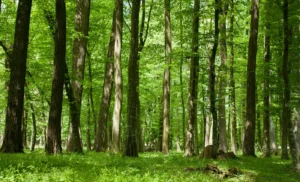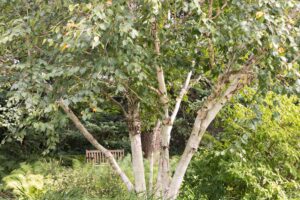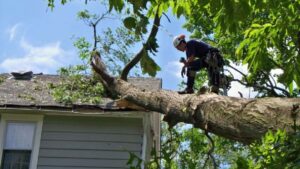Are Your Peach Tree Leaves Turning Yellow? Causes and Solutions
Are you concerned about the yellowing leaves on your peach tree? You’re not alone. Many home gardeners and orchard owners across the US face this common but concerning issue. Yellow leaves on peach trees can indicate various problems, from nutrient deficiencies to pest infestations or diseases. Understanding the cause is crucial for implementing the right solution and restoring your tree’s health.
In this comprehensive guide, we’ll explore the various reasons why peach tree leaves turn yellow and provide actionable solutions to address each problem. Whether you’re a novice gardener or an experienced orchardist in the US market, this article will help you diagnose and treat your ailing peach trees.
Common Causes of Yellow Leaves on Peach Trees
Nutrient Deficiencies
One of the most common reasons for yellowing peach tree leaves is nutrient deficiency. Peach trees require specific nutrients to thrive, and when these nutrients are lacking, the leaves often respond by turning yellow.
Iron Chlorosis
Iron chlorosis is a condition where the leaves develop yellow color while the veins remain green. This happens when your peach tree cannot access enough iron from the soil, even if iron is present. This condition is particularly common in alkaline soils (pH above 7.0) where iron becomes less available to plants.
To correct iron chlorosis:
- Apply iron chelates to the soil or as a foliar spray
- Lower soil pH using sulfur or aluminum sulfate if your soil is too alkaline
- Avoid overwatering, as wet soil conditions can worsen iron uptake
Nitrogen Deficiency
If your peach tree leaves are turning uniformly yellow, especially older leaves at the bottom of the tree, nitrogen deficiency might be the culprit. Nitrogen is essential for leaf development and overall tree vigor.
To address nitrogen deficiency:
- Apply a balanced fertilizer with higher nitrogen content
- Add composted manure around the base of the tree
- Plant nitrogen-fixing cover crops in your orchard
According to the USDA Agricultural Research Service, proper fertilization can significantly improve tree health and fruit production in peach orchards.
Water Management Issues
Water management plays a crucial role in peach tree health. Both overwatering and underwatering can cause yellowing leaves.
Overwatering
When you overwater your peach tree, the roots can become oxygen-deprived and start to decay. This root damage prevents proper nutrient uptake, resulting in yellow leaves.
Signs of overwatering include:
- Yellow leaves that feel soft and droopy
- Mold or fungal growth around the base of the tree
- Water-soaked spots on leaves
- Standing water around the tree
Underwatering
Conversely, underwatering stresses your peach tree and can cause leaves to yellow and eventually drop. During hot, dry periods, peach trees require additional water to maintain healthy foliage and fruit development.
Signs of underwatering include:
- Yellow leaves that feel crispy and eventually turn brown
- Curling or wilting leaves
- Premature fruit drop
- Slowed growth
Pest Infestations
Several pests target peach trees and can cause yellowing leaves as a symptom of their damage.
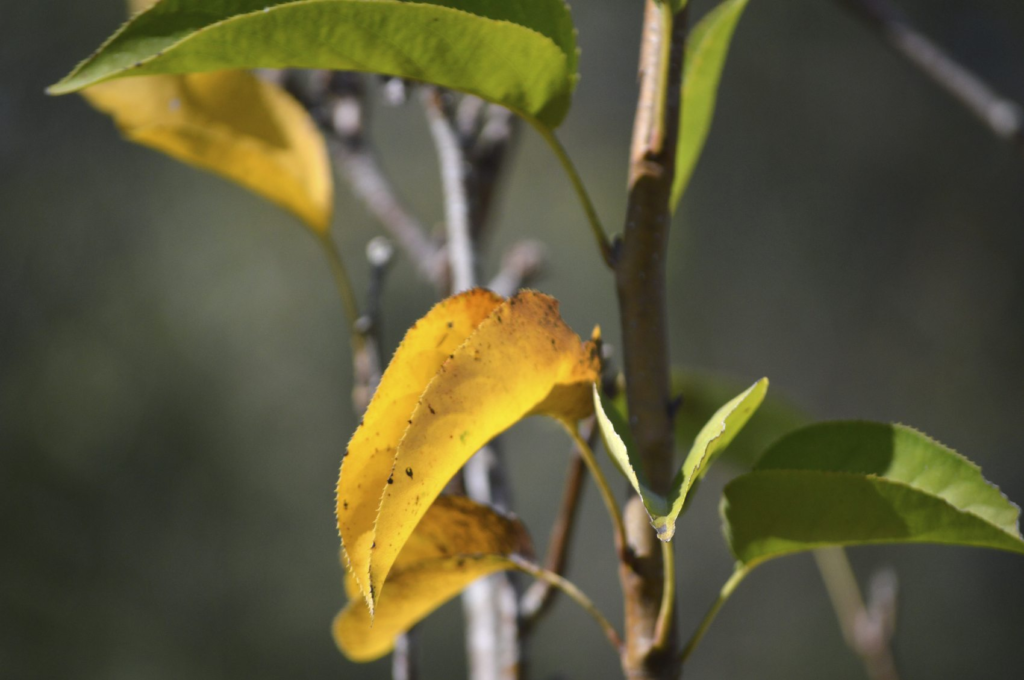
Peach Tree Borers
These insects tunnel into the trunk and main branches of peach trees, disrupting the flow of water and nutrients. As a result, leaves may turn yellow and the tree’s overall health declines.
Aphids
These small insects feed on the sap of peach tree leaves, causing them to curl, yellow, and become distorted. Heavy aphid infestations can significantly weaken your tree.
Spider Mites
These tiny pests are difficult to see without magnification but can cause stippling and yellowing of leaves. During hot, dry conditions, spider mite populations can explode, causing severe damage.
Diseases
Various diseases can cause peach tree leaves to yellow, including fungal, bacterial, and viral pathogens.
Peach Leaf Curl
This fungal disease causes leaves to pucker, distort, and turn yellow to red. Infected leaves eventually fall off, weakening the tree and reducing fruit production.
Bacterial Spot
This bacterial infection causes small water-soaked spots on leaves that eventually turn yellow and drop prematurely. The disease can also affect fruit quality.
Root Rot
Caused by various fungi, root rot develops in poorly drained soils. As the roots decay, the tree cannot absorb water and nutrients properly, leading to yellowing leaves and eventual death if left untreated.
Diagnosing the Problem: Yellow Leaf Patterns and What They Mean
The pattern of yellowing can provide important clues about what’s troubling your peach tree:
| Yellowing Pattern | Most Likely Cause | Distinguished Features |
|---|---|---|
| Yellowing between veins, veins remain green | Iron or manganese deficiency | Most noticeable on new growth |
| Uniform yellowing, starting with older leaves | Nitrogen deficiency | General loss of vigor, reduced growth |
| Yellow leaves with brown spots | Fungal or bacterial disease | Often accompanied by holes or lesions |
| Yellow leaves that drop readily | Water stress (too much or too little) | Check soil moisture level |
| Yellow leaves with visible pests | Insect infestation | Look for insects on leaf undersides |
| Yellow leaves starting at bottom of tree | Natural seasonal change (fall) or age-related | Normal if occurring in autumn |
| Yellow leaves primarily on one side/branch | Physical damage or localized infection | Check for wounds, cankers, or girdling |
Solutions for Yellow Peach Tree Leaves
Now that you’ve identified the potential cause of your peach tree’s yellow leaves, it’s time to implement appropriate solutions.
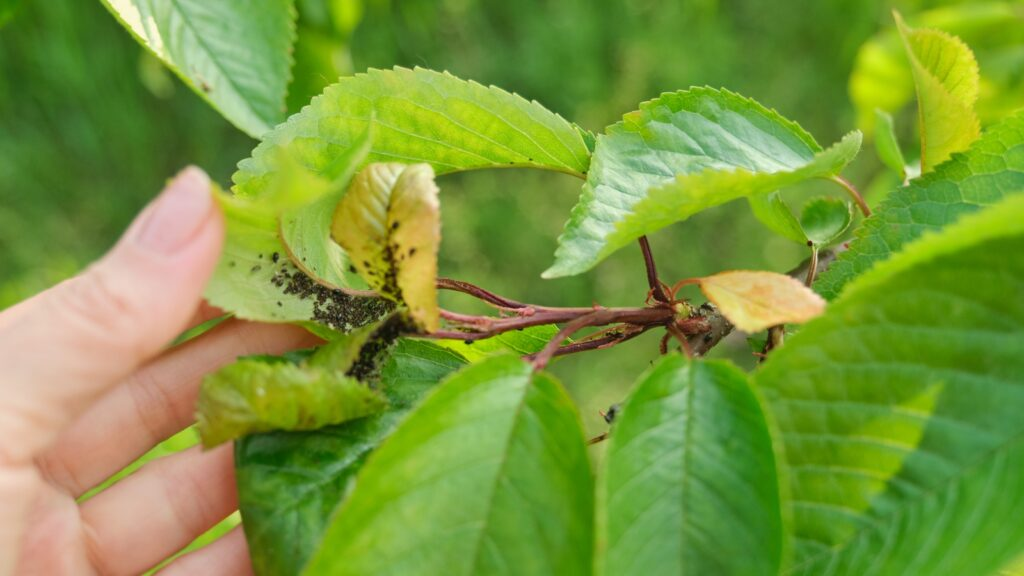
Soil Testing and Amendments
Before applying any fertilizers or amendments, conduct a soil test to determine your soil’s pH and nutrient levels. The USDA Cooperative Extension Service offers soil testing services in most states, or you can purchase a home testing kit.
Based on your soil test results:
- Adjust soil pH if necessary (peach trees prefer slightly acidic soil with pH 6.0-6.5)
- Apply specific nutrients that are deficient
- Add organic matter to improve soil structure and nutrient retention
Proper Fertilization Schedule
Peach trees benefit from a consistent fertilization schedule:
- Early spring: Apply a balanced fertilizer before new growth begins
- Late spring: Provide a nitrogen boost if needed
- After harvest: Apply a lower-nitrogen fertilizer to prepare for winter
- Avoid fertilizing in late summer or fall, which can stimulate vulnerable new growth
Watering Best Practices
Proper watering is crucial for peach tree health:
- Water deeply but infrequently to encourage deep root growth
- Apply water to the drip line, not directly against the trunk
- Use mulch to retain soil moisture and regulate temperature
- Consider installing drip irrigation for consistent water delivery
- Adjust watering based on weather conditions and soil type
According to the USDA Natural Resources Conservation Service, proper irrigation management can reduce water usage while maintaining optimal tree health.
Pest and Disease Management
Implementing an integrated pest management (IPM) approach can help control pests and diseases:
- Regularly inspect your trees for signs of infestation or disease
- Prune and destroy infected branches or leaves
- Apply dormant oil in late winter to smother overwintering pests
- Use appropriate fungicides or insecticides when necessary
- Encourage beneficial insects that prey on peach tree pests
Proper Pruning Techniques
Pruning improves air circulation and reduces disease pressure:
- Remove dead or diseased branches during the dormant season
- Thin the canopy to allow light and air to reach all parts of the tree
- Clean pruning tools between cuts when dealing with diseased material
- Avoid heavy pruning during the growing season
Preventative Measures for Healthy Peach Trees
Prevention is always easier than treatment. Here are some practices to keep your peach trees healthy and prevent yellowing leaves:
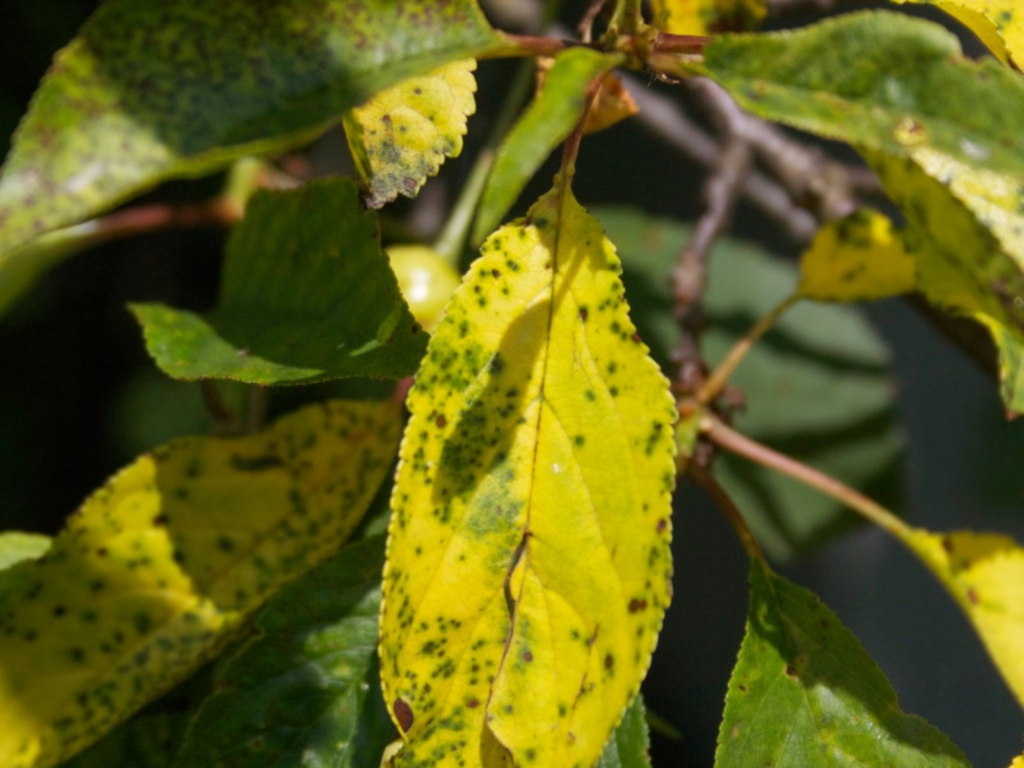
Site Selection and Planting
Choose the right location for your peach trees:
- Select sites with full sun exposure (at least 6 hours daily)
- Ensure good air circulation to reduce disease pressure
- Plant in well-draining soil to prevent root problems
- Consider the mature size of the tree when spacing
Routine Maintenance
Regular maintenance helps catch problems early:
- Inspect trees weekly during the growing season
- Clean up fallen leaves and fruit to reduce disease carryover
- Apply a layer of mulch around trees, keeping it away from the trunk
- Perform annual soil tests to monitor nutrient levels
Seasonal Care Calendar
Follow this seasonal care calendar for optimal peach tree health:
- Winter: Apply dormant sprays, prune while dormant
- Spring: Fertilize, monitor for pests as leaves emerge
- Summer: Thin fruit, maintain consistent watering
- Fall: Clean up fallen leaves and fruit, prepare for winter
When to Seek Professional Help
While many peach tree problems can be addressed by home gardeners, some situations warrant professional assistance:
- Severe or widespread disease that doesn’t respond to treatment
- Unknown symptoms that don’t match common problems
- Large, mature trees that require specialized equipment for treatment
- Persistent issues despite following proper care guidelines
Your local extension office can provide valuable assistance with difficult tree problems. Find your local office through the USDA National Institute of Food and Agriculture.
Conclusion
Yellow leaves on your peach tree serve as an important warning sign that something isn’t right. By carefully observing the patterns of yellowing and associated symptoms, you can diagnose the problem and implement appropriate solutions. Remember that peach trees require consistent care and monitoring to remain healthy and productive.
With proper attention to soil health, water management, pest control, and seasonal maintenance, you can restore your yellowing peach tree to vibrant health and enjoy bountiful harvests for years to come. Don’t be discouraged by yellow leaves – view them as valuable communication from your tree that helps you become a better orchardist.
Whether you’re growing a single backyard peach tree or managing a small orchard for the US market, the principles of good tree care remain the same. Pay attention to your trees’ needs, respond promptly to problems, and you’ll be rewarded with healthy foliage and delicious peaches.


